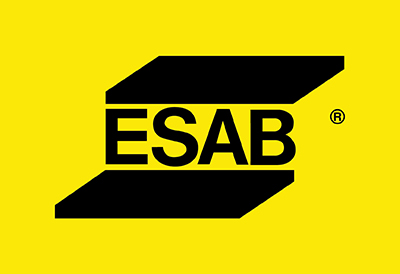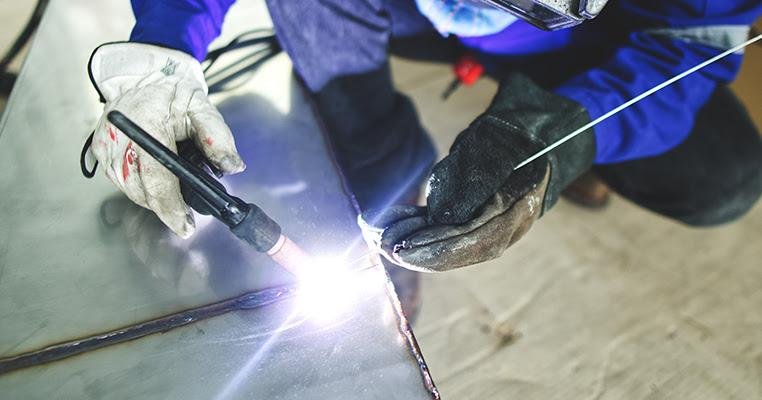To weld thin metal with an arc welder, use a low amperage and a fast welding speed. Opt for a smaller diameter electrode to control heat input and minimize burn-through.
Welding thin metal with an arc welder can be a tricky process that requires finesse and precision. Arc welding, often known as Stick welding, involves using an electric current to create enough heat to melt metal, allowing two pieces to fuse together once cooled.
This technique is common in both industrial fabrication and home-based metalwork projects. Achieving a strong weld without warping or burning through the metal demands an understanding of the right tools and techniques. Choosing the appropriate electrode, maintaining a tight arc length, and mastering the motion and pace of your welding rod are all crucial steps in producing a clean, strong weld on thin materials. By keeping these factors in check, even a novice welder can successfully join thin metal components with confidence.
Selecting The Right Equipment
Welding thin metal with an arc welder requires precision and the correct tools. Step one is selecting the equipment that fits the job. This step is crucial. The quality of the weld depends on it. Let’s dive into the essentials for welding thin metal. We look at welders and electrodes. These are two key components.
Choosing The Right Welder
When choosing a welder, think of the metal’s thickness. For thin metals, a TIG (tungsten inert gas) welder works best. This welder gives control over heat and amperage. It makes it suitable for delicate jobs. Consider an inverter-based model. They allow for a stable low amperage start. A feature critical for welding thin sheets.
Another option is a MIG (metal inert gas) welder with pulse control. This feature reduces heat input. It prevents burn-through on thin metals. Be sure the welder can handle electrodes that are appropriate for thin metal work.
Selecting The Correct Electrode
The right electrode is important for a clean weld. Use a thinner electrode for thin metal. A diameter of 1/16 inch or less is ideal. Look for a high-quality filler material. It should match the metal you are welding.
Choose an electrode with a coating designed for thin metal. The coating stabilizes the arc and helps control the heat. Electrodes with a rutile or cellulose coating are often recommended. These are easier to use and create a smooth bead.
| Electrode Type | Thickness | Usage |
|---|---|---|
| Rutile-coated | 1/16 inch | Suitable for thin sheets |
| Cellulose-coated | 1/16 inch or less | Ideal for fine welds |
- Avoid electrodes designed for high amperage jobs.
- Look at the electrode’s compatibility with your welder.
- Check that electrode handling is easy for precision work.
Preparing The Work Area
Welding thin metal with an arc welder starts with a well-prepared work area. The right setup ensures safety and weld quality. Follow these steps for great results.
Cleaning The Metal Surface
Clean metals join better. Begin by removing any rust, paint, or oil from the metal. Use a wire brush, grinder, or sandpaper. Be thorough but gentle to avoid warping thin metals.
- Use a wire brush for large, easy-to-reach areas.
- Sandpaper works well for small or delicate sections.
- For tough spots, a handheld grinder may be necessary.
Securing The Workpiece
Secure materials before starting. Thin metals can warp or move if not held properly. Use clamps to hold the metal in place on a welding table. Ensure the clamps do not interfere with your welding path.
| Material | Clamp Type | Notes |
|---|---|---|
| Small Parts | Spring Clamps | Easy to use, adjustable pressure. |
| Larger Sections | C-Clamps | More force, stable positioning. |
- Place your metal on a fire-resistant welding table.
- Position clamps to avoid direct heat.
- Double-check for movement before striking an arc.
Setting Up For Success
Welding thin metal with an arc welder is a task that requires skill and precision. Before striking an arc, a proper setup ensures a successful weld. This setup involves tweaking the welder to the optimal settings and creating a safe environment.
Adjusting Welder Settings
Start with selecting the right electrode for your project. A good choice for thin metal is an E6013. Next, adjust the amperage on your welder. Thin metals require less heat. Use a lower setting to prevent burn-through. Aim for an amperage that’s just enough to create a stable arc. Test your setup on scrap metal before beginning your project.
Keep these tips in mind:
- Choose the right electrode size. Smaller diameters work best with thin materials.
- Decrease voltage and amperage. Find the sweet spot to avoid excess heat.
- Test your settings first. Practicing helps avoid mistakes on your main piece.
Ensuring Proper Ventilation
Proper ventilation is critical when welding. It removes harmful fumes from your workspace. Ensure your workspace is well-ventilated. Open doors and windows. Use exhaust fans or a ventilation system if available. Your health and safety are vital.
| Ventilation Type | Benefits |
|---|---|
| Natural | Uses windows and doors to let fresh air in. |
| Mechanical | Uses fans or a dedicated system to move air. |
| Local Exhaust | Directs fumes away from the welder immediately. |
Wear a respirator if necessary. Check the workspace periodically to ensure air quality remains safe. Your ability to breathe easy while working is essential.

Credit: esab.com
Mastering The Technique
Welding thin metal with an arc welder is a true test of skill and patience. Achieving a strong, clean weld without burning through the material requires precision. This guide will walk you through the essential steps to master this delicate process.
Maintaining A Steady Arc
Maintaining a stable arc is vital when welding thin metals. Here’s how to stay steady:
- Use the right electrode. A smaller size electrode works best for thinner metals.
- Set correct amperage. Lower amperage prevents burn-through. Aim for the lowest amperage that allows a stable arc.
- Keep a short arc length. This minimizes the heat input and enhances control.
- Move quickly. Fast movements reduce heat build-up and limit the potential for holes.
Controlling The Weld Pool
Control over the weld pool is crucial for a sound weld. Here are tips to master this control:
- Choose a thin rod for less heat. This prevents the pool from becoming too large.
- Watch the pool carefully. Ensure it’s not too wide or deep to keep the heat consistent.
- Implement a weaving technique. Weave with caution to distribute heat evenly.
- Practice makes perfect. Regular practice on scrap metal improves skills.
Finishing Touches
Once you’ve mastered the art of welding thin metal with an arc welder, the final step is all about refinement. Finishing touches transform your project from a rough weld to a seamless join. These steps remove imperfections and ensure your work looks professional. Let’s dive into the crucial stages of post-weld cleanup and inspection.
Removing Slag And Splatter
After welding, you’ll notice slag and splatter on your workpiece. These are byproducts of the welding process. They must go to reveal the quality of your weld.
- Start with a welding slag hammer to chip off large slag pieces.
- Use a wire brush to scrub off smaller particles.
- For a smooth finish, a grinding wheel can be used to remove stubborn spots.
A clean surface not only looks better but also allows you to properly inspect the weld seam.
Inspecting The Weld Seam
Inspecting the weld seam is critical to ensure there are no defects.
- Look for holes or cracks that can compromise the strength of the weld.
- Check for uniformity—the seam should be even and consistent.
- Feel along the weld with a gloved hand for any irregularities.
If you find any imperfections, you may need to reweld certain sections to ensure integrity. For an ultra-smooth finish, use fine-grit sandpaper to sand the seam. This will provide a sleek, professional appearance. Taking the time for thorough inspection and cleanup pays off in the look and quality of your welded joint.

Credit: atlasmfg.com

Credit: blog.red-d-arc.com
Frequently Asked Questions On How To Weld Thin Metal With Arc Welder
Can You Arc Weld Thin Metal?
Yes, you can arc weld thin metal, but it requires precise control and skill to prevent warping or burning through the material. Utilize lower current settings and faster welding speeds for best results.
What Is The Best Way To Weld Thin Metal?
To best weld thin metal, use TIG or MIG welding with proper heat control, a thinner wire or rod, and ensure tight joint fit-up. Employ tack welds to hold pieces in place and reduce warping. Always weld in short bursts to minimize heat buildup.
What Is The Best Arc Welding Rod For Thin Metal?
The best arc welding rod for thin metal is typically a 6013 electrode due to its mild penetration and smooth weld bead.
What Is The Minimum Thickness For Arc Welding?
The minimum thickness for arc welding typically ranges from 0. 025 to 0. 030 inches, depending on the electrode and material used.
Conclusion
Mastering the technique of welding thin metal with an arc welder is a valuable skill. By embracing the tips shared, from control settings to joint preparation, your welds should show marked improvement. Keep practicing and always prioritize safety to ensure professional-grade results on every project.
